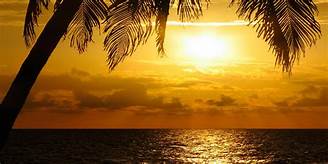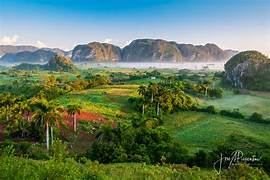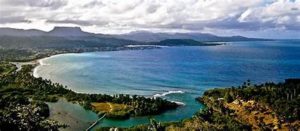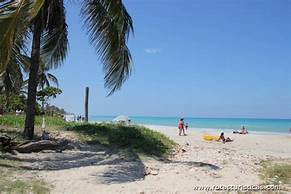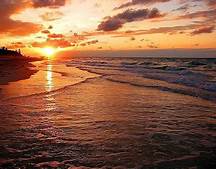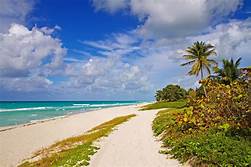CONSIDERADOS LOS LUGARES MAS HERMOSOS DE CUBA. (VIII). PHOTOS.
Cuba es una isla larga y delgada ubicada en el Caribe y conocida por su colorida cultura, playas idílicas y frondosos bosques. Gran parte de las más de 42,000 millas cuadradas del país ha sido reconocida por el Patrimonio Mundial de la UNESCO por su belleza e importancia histórica. Aquí hemos redondeado una lista que incluye algunos de esos sitios y más allá como los lugares más bellos de Cuba.
VALLE DE VIÑALES.
Located in the foothills of Guaniguanico corresponds to a National Park agricultural valleys and cultivation of snuff, home to huge rock formations with rounded tips, known as hummocks. Declared a World Heritage Site by UNESCO because of its rich cultural landscape.
Ubicado en las estribaciones de Guaniguanico corresponde a un parque nacional de valles agrícolas y de cultivo de tabaco, hogar de enormes formaciones rocosas de puntas redondeadas, conocidas como hummocks. Declarado Patrimonio de la Humanidad por la UNESCO debido a su rico paisaje cultural.
LA HAVANA VIEJA
La Habana Vieja, o Habana Vieja , cuenta con el estatus de Patrimonio Mundial de la UNESCO porque la ciudad es hogar de algunos de la historia mejor conservada en Cuba. Tanto que parece que el tiempo se detuvo aquí. Pasee por las calles empedradas para encontrar excelentes ejemplos de arquitectura barroca y neoclásica como la catedral barroca cubana de San Cristóbal,
Es de mencionar el Castillo de la Real Fuerza, una fortaleza militar, o la Plaza Vieja, una hermosa plaza que sirve como un colorido lugar.
BARACOA
Baracoa es una porción de paraíso poco conocida en Cuba. Baracoa, cuyo nombre original completo es: Nuestra Señora de la Asunción de Baracoa (“Nuestra Señora de la Asunción de Baracoa”), es un municipio y ciudad en la provincia de Guantánamo, cerca del extremo oriental de Cuba. Es el asentamiento español más antiguo en Cuba y fue su primera capital (la base de su apodo Ciudad Primada, “Primera Ciudad”).
Baracoa se encuentra sobre la Bahía de la Miel y está rodeada por una amplia cadena montañosa (incluyendo la Sierra del Purial), lo que la hace bastante aislada, salvo por un solo camino de montaña construido en la década de 1960. La cordillera de Baracoa está cubierta de bosques húmedos cubanos y pinares cubanos.
Baracoa tiene un clima de selva tropical (Af) según la clasificación climática de Köppen con altas temperaturas y precipitaciones durante todo el año. Aunque no hay verdaderas estaciones húmedas o secas, hay un tramo notablemente más húmedo de octubre a diciembre.
GUANABO: PLAYAS DEL ESTE. HABANA.
Some 30 km to 45 minutes east of La Habana on the Autopista called Via Blanca, you’ll find this pleasant village, the easternmost point of the Playas del Este (Beaches east of Havana), very popular (May to September) with Habaneros mostly during Summer. This area is part of the new Mayabeque province – replacing Ciudad de La Habana province. West of here and part of the same stretch along the sea are Tarara, Boca Ciega, and Santa Maria del Mar (sort of micro Varadero, at 3 km). And then another nice playa, El Megano.
A unos 30 km a 45 minutos al este de La Habana, en la autopista Via Blanca, encontrará este agradable pueblo, el punto más oriental de las Playas del Este (Playas al este de La Habana), muy popular (de mayo a septiembre) entre los habaneros, principalmente durante Verano. Esta área es parte de la nueva provincia de Mayabeque, en reemplazo de la provincia de Ciudad de La Habana. Al oeste de aquí y parte del mismo tramo a lo largo del mar están Tarara, Boca Ciega y Santa Maria del Mar (especie de micro varadero, a 3 km). Y luego otra bonita playa, El Megano.
VARADERO.
Varadero, ubicado a 36 km de la ciudad de Matanzas, en la Península de Hicacos, es el punto de Cuba más cercano a los Estados Unidos.
Con una longitud de unos 30 kilómetros, de los cuales 22 kilómetros son de playa, Varadero es considerada, por su perenne luz tropical, su exótica y exuberante vegetación, y la calidad de sus aguas, uno de los principales atractivos para viajeros de todo el mundo. mundo. La Playa de Varadero o Playa Azul, un hermoso enclave de arena rosa y blanca y aguas cristalinas, es una de las playas más espectaculares del mundo. Sin duda, Playa de Varadero es la playa más hermosa de Cuba.
PARQUE NACIONAL GUANAHACABIBES.
Continuamos en el extremo más occidental de Cuba en la Península de Guanahacabibes, declarada Reserva de la Biosfera por la UNESCO, el Parque Nacional Guanahacabibes se encuentra en la península de Guanahacabibes en el extremo más occidental de la isla y a 5 horas de la capital La Habana, una de las más grandes de Cuba. áreas protegidas, y declarado Biosfera Mundial por la UNESCO en 1987. Este parque nacional marino está en el centro de acuerdos científicos bilaterales.
Esta reserva de la biosfera de 121.572 hectáreas de silvicultura de vida silvestre, incluidas 154 millas cuadradas del parque nacional, es una historia de esperanza y recuperación. Es el hogar de una variedad de hábitats que incluyen arrecifes de coral, manglares, matorrales y bosques de hoja perenne con más de 170 especies de aves y docenas de especies de reptiles y mamíferos. La costa tiene la segunda población reproductora de tortuga verde más grande del país con un promedio de más de 300 nidos por temporada.
A dos horas en auto desde Pinar del Río, el Parque Nacional Guanahacabibes, nuestros participantes experimentan la interdependencia de los ecosistemas marinos compartidos por Cuba y los Estados Unidos.
CONSIDERED THE MOST BEAUTIFUL PLACES IN CUBA. (VIII). PHOTOS.
Cuba is a long, thin island located in the Caribbean and known for its colorful culture, idyllic beaches, and lush forests. Much of the country’s more than 42,000 square miles has been recognized as a UNESCO World Heritage Site for its beauty and historical importance. Here we have rounded up a list that includes some of those sites and beyond as the most beautiful places in Cuba.
OLD HAVANA
Old Havana, or Habana Vieja, boasts UNESCO World Heritage status because the city is home to some of the best-preserved history in Cuba. So much so that it seems that time has stopped here. Stroll the cobblestone streets to find great examples of Baroque and Neoclassical architecture like the Cuban Baroque Cathedral of San Cristóbal, as well as historic sites like the Bodeguita del Medio, an old restaurant where Hemingway used to hang out. It is worth mentioning the Castillo de la Real Fuerza, a military fortress, or the Plaza Vieja, a beautiful square that serves as a colorful place.
BARACOA
Baracoa, whose full original name is: Nuestra Señora de la Asunción de Baracoa (“Our Lady of the Assumption of Baracoa”), is a municipality and city in Guantánamo Province near the eastern tip of Cuba.
It is the oldest Spanish settlement in Cuba and was its first capital (the basis for its nickname Ciudad Primada, “First City”).
Baracoa lies on the Bay of Honey (Bahía de Miel) and is surrounded by a wide mountain range (including the Sierra del Purial), which causes it to be quite isolated, apart from a single mountain road built in the 1960s. The Baracoa mountain range is covered with Cuban moist forests and Cuban pine forests.
Baracoa has a tropical rainforest climate (Af) according to the Köppen climate classification with high temperatures and rainfall throughout the year. Although there are no true wet or dry seasons, there is a noticeably wetter stretch from October to December.
GUANABO: BEACHES OF THE EAST. HAVANA.
Some 30 km to 45 minutes east of La Habana on the Autopista called Via Blanca, you’ll find this pleasant village, the easternmost point of the Playas del Este (Beaches east of Havana), very popular (May to September) with Habaneros mostly during summer. This area is part of the new Mayabeque province – replacing Ciudad de La Habana province. West of here and part of the same stretch along the sea are Tarara, Boca Ciega, and Santa Maria del Mar (sort of micro Varadero, at 3 km). And then another nice beach, El Megano.
About 30 km 45 minutes east of Havana, on the Via Blanca highway, you will find this pleasant town, the easternmost point of the Playas del Este (Beaches East of Havana), very popular (from May to September) among Havanans, mainly during summer. This area is part of the new province of Mayabeque, replacing the province of Ciudad de La Habana. To the west of here and part of the same stretch along the sea are Tarara, Boca Ciega, and Santa Maria del Mar (a kind of micro Varadero, 3 km away). And then another beautiful beach, El Megano.
VARADERO.
Varadero, located 36 km from the city of Matanzas, on the Hicacos Peninsula, is the closest point in Cuba to the United States.
With a length of about 30 kilometers, of which 22 kilometers are beaches, Varadero is considered, due to its perennial tropical light, its exotic and exuberant vegetation, and the quality of its waters, one of the main attractions for travelers from all over the world. world. world. Varadero Beach or Playa Azul, a beautiful enclave of pink and white sand and crystal clear waters is one of the most spectacular beaches in the world. Without a doubt, Playa de Varadero is the most beautiful beach in Cuba.
VIÑALES VALLEY.
Located in the foothills of Guaniguanico corresponds to a National Park agricultural valleys and cultivation of snuff, home to huge rock formations with rounded tips, known as hummocks. Declared a World Heritage Site by UNESCO because of its rich cultural landscape.
Located in the foothills of Guaniguanico, it corresponds to a national park of agricultural and tobacco-growing valleys, home to enormous rock formations with rounded points, known as hummocks. Declared a World Heritage Site by UNESCO due to its rich cultural landscape.
GUANAHACABIBES NATIONAL PARK.
We continue on the westernmost tip of Cuba in the Peninsula de Guanahacabibes, declared a Biosphere Reserve by UNESCO, the Guanahacabibes National Park is located on the Guanahacabibes peninsula at the westernmost tip of the island and 5 hours from the capital Havana, one of Cuba’s largest protected areas, and declared a UNESCO World Biosphere in 1987. This national marine park is at the center of scientific, bilateral agreements.
This biosphere reserve of 121,572 hectares of wildlife forestry including 154 square miles of the national park and is a story of hope and recovery. It is home to a variety of habitats including coral reefs, mangroves, scrublands, and evergreen forests with more than 170 species of birds and dozens of reptile and mammal species. The coast has the second largest breeding population of green turtles in the country with an average of more than 300 nests per season.
A two-hour drive from Pinar del Río, the Guanahacabibes National Park our participants experience the inter-dependence of marine ecosystems shared by Cuba and the United States.
Agencies. Wiki. -Beautiful Cuba. YourTripAg. Natasha Perkins. Extractos. Excerpts. Internet Photos. Arnoldo Varona. www.TheCubanHistory.com
THE CUBAN HISTORY, HOLLYWOOD.



 CONSIDERADOS los Lugares más Hermosos de Cuba (VIII). PHOTOS. * CONSIDERED the most Beautiful Places in Cuba. (VIII). PHOTOS.
CONSIDERADOS los Lugares más Hermosos de Cuba (VIII). PHOTOS. * CONSIDERED the most Beautiful Places in Cuba. (VIII). PHOTOS.